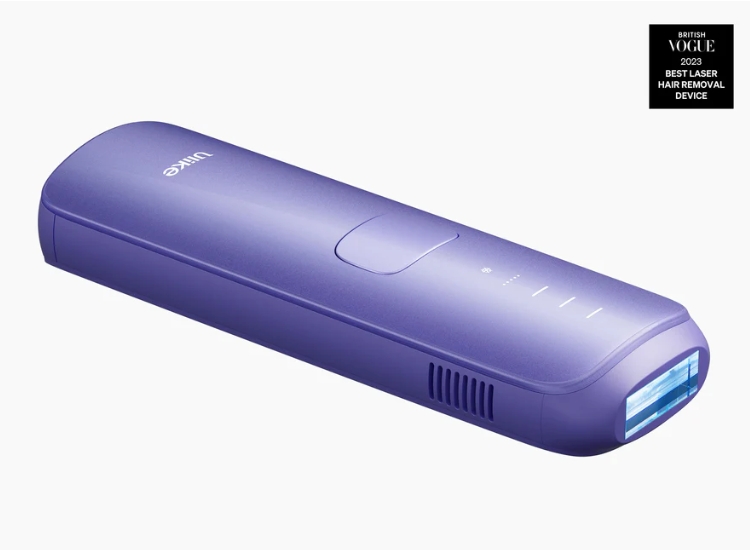It’s no secret that intermittent fasting can be an effective way to reduce belly fat. But, the big question is, what’s the best intermittent fasting window when it comes to losing belly fat? In this article, we’ll explore the many questions around fasting timeframes and determining which one works best for you.
We’ll also dive into some of the science behind why this type of eating could help you lose weight and shed stubborn belly fat. So whether you’re a beginner or experienced with intermittent fasting, read on for info that may just change your health game!
Understanding Intermittent Fasting
Intermittent fasting is a pattern of eating that involves periods of eating and fasting. Generally speaking, intermittent fasting encourages you to eat fewer calories by alternating between periods of eating and not-eating across a given period, usually one day to several weeks depending on your goals. It’s important to note that the food restriction in intermittent fasting isn’t about changing what you eat – it doesn’t necessarily mean you should start eating healthier – but rather when you eat. This means the same foods or types of meals can be eaten during eating windows or at meal times, just not as often over 24 hours depending on your chosen protocol.
There are potential health benefits associated with this difficult form of caloric restriction such as decreased risk for obesity and disease (type 2 diabetes specifically). There is also evidence that suggests this method can reduce inflammation levels in folks who suffer from autoimmune disorders like lupus or psoriasis. Lastly, it may lead to more efficient fat-burning processes by inducing cellular reprogramming (otherwise known as autophagy).
But don’t forget! For any diet ─ including intermittent fasting – to be effective long-term the rules must include healthy foods! So make sure your dietary restrictions include lots of veggies, lean proteins, and healthy, low-glycemic carbohydrates – simply balance out those treats here and there with healthier options!
Popular Intermittent Fasting Windows
While cutting back on calories can be tough, some popular intermittent fasting methods can make the process more manageable and sustainable. Here are a few of those commonly used techniques:
-
The 16:8 Method
This involves 16 hours of fasting and an 8-hour eating window. During the 8 hours of non-fasting time, caloric intake is still restricted to about 50% in most cases, so it isn’t a free-for-all – discipline is still necessary! Also, note that calorie restriction on this type of protocol should increase incrementally over time as you get used to it.
-
The 14:10 Method
More beginner-friendly with only 14 hours of fasting (not consecutive) and 10 hours for eating which provides greater flexibility during your feeding periods. The goal is also to reduce overall calorie consumption by up to 50%.
-
The 5:2 Diet

With this diet, you eat normally for 5 days while significantly cutting calories for 2 days — up to 500 kcals per day on these two days. The goal is not total deprivation but simply reducing intake enough so that one’s body starts burning fat as a source of energy rather than carbohydrates or sugar from processed foods, thus causing weight loss. Some experts suggest increasing protein intake on fast days because protein helps stabilize blood glucose levels throughout the day.
-
Eat Stop Eat
With this approach, you don’t restrict your daily meals but instead have 24-hour fasts once or twice a week. It works by forcing your body into using its stores of body fat for energy during the 24 hours — when fats break down they convert into ketones which help fuel the brain as well as other organs until normal mealtime resumes at 24 hours later. Note that during regular meal times, it should remain balanced, focusing on whole grains, veggies, and lean proteins rather than high-sugar processed foods or sugary sodas/drinks, etc…
-
The Warrior Diet

For anyone especially looking to gain muscle mass along with losing belly fat then this could be perfect! Fasting involves 20 hours where you refrain from food while drinking plenty of liquids such as water, tea, coffee, etc… – Then have one big meal in the evening containing lots of healthy proteins complete with good carbohydrates such as potatoes/rice plus veg. This pattern gives your body just enough fuel and nutrients for exercise whilst also spiking metabolism meaning good fat-burning potential!
Which Window is Best for Losing Belly Fat?
The most effective and safe approach to intermittent fasting for belly fat depends on your habits, lifestyle, and goals. While each window or type of restriction has its pros and cons, some general scientific reports show that the 16:8 and 14:10 methods are best when it comes to losing belly fat. This means you should limit your calorie consumption over 12-14 hours (with 8-10 hours reserved for consuming meals). 
For maximum benefit do not skip breakfast as this has been shown to reduce overall calories consumed in a given day helping shift stubborn weight from that tummy area where we all want it! It can also help reduce cortisol levels (the stress hormone) which is highly correlated with an increase in abdominal fat storage – no one wants that! While each person should experiment to find their sweet spot depending on their body’s needs, aiming towards 5 days per week as the ideal goal with two rest days when you’re feeling overly fatigued or if your body simply won’t go any further. Doing so helps avoid stress which could be detrimental to long-term success!
While strict adherence is important, incorporating healthy treats into a diet every once in a while may be beneficial too. Those who incorporate small rewards into their diets are more likely to stick with them long-term than those who try recipes or products they don’t enjoy. So, while knowing what will work best for different individuals might require some trial and error and experimentation – find what works best for you!
Tips for Success with Intermittent Fasting
Starting any new eating pattern can be challenging. And intermittent fasting is no exception. Here are some tips to help you carve out a successful nutrition plan that works for you and your individual goals while shedding body fat:
-
Start slow
Don’t jump from zero to 60 (or 12-16 hours) right away, the transition into this way of eating needs to be gradual. You might want to start by only cutting out late-night snacking or one snack session, as 16 hours of fasting may not be necessary in all cases – everyone’s different!
-
Track what you eat

Counting calories helps make sure that even within a smaller window, overall calorie consumption isn’t too high or too low (especially during eating windows). Tracking calories can lead to more effective weight loss than non-tracking diets!
-
Stay hydrated
Water doesn’t break the fast but it will keep energy levels up and help stave off hunger pangs which could otherwise eat away at self-control – aim for 8 glasses per day as advised by medical experts!
-
Get enough sleep
Lack of sleep messes with hormones and blood sugar levels making it much harder to stick with any sustainable pattern — most adults need between 7-9 hours per night so don’t skimp here either!
Complementary Practices for a Confident You
While the core focus of this article has been on the benefits of intermittent fasting for belly fat reduction, overall well-being doesn’t stop at diet and exercise. Just as you take steps to feel good on the inside, taking care of your external appearance can also boost confidence. Here are some simple yet effective complementary practices you may want to incorporate into your routine:
-
Hair Removal for Smooth Skin
 A smooth body makes all the difference. Investing in a quality Ulike Sapphire Air3 IPL hair removal device can provide a hassle-free experience at home while also reducing hair growth over time for lasting results and more time focusing on other important well-being practices.
A smooth body makes all the difference. Investing in a quality Ulike Sapphire Air3 IPL hair removal device can provide a hassle-free experience at home while also reducing hair growth over time for lasting results and more time focusing on other important well-being practices.
Whether it’s shaving, waxing, or investing in hair removal devices like electric shavers and epilators – there’s something that works best even for sensitive skin!

-
Skincare Routine
Prepare your skin to glow with proper cleansing (which includes removing makeup), exfoliating, and moisturizing routines tailored to specific skin types or problems – consult professionals if need be! Keep an eye out too on how environmental factors impact our bodies such as pollution, UV rays, etc.. can affect overall comedonal activity. Breathable but protective materials must also be included when exercising outdoors during hot summer months where sweat glands might block natural cellular respiration throughout active sessions leading to uncomfortable outcomes such as clogged pores breakouts etc.
exfoliating, and moisturizing routines tailored to specific skin types or problems – consult professionals if need be! Keep an eye out too on how environmental factors impact our bodies such as pollution, UV rays, etc.. can affect overall comedonal activity. Breathable but protective materials must also be included when exercising outdoors during hot summer months where sweat glands might block natural cellular respiration throughout active sessions leading to uncomfortable outcomes such as clogged pores breakouts etc.
-
Mindfulness and Meditation
Keeping calm is key + it goes a long way when combined with physical health and fitness pursuits – instead of ruminating constantly over stressful situations or worrying about tomorrow try making mindfulness part daily routine through just-15 minutes meditation session every day whether before bed after waking up or whatever fits best into timeframe available – realize true potential by mapping out an individual plan ahead so it’s feasible long term which will help stay motivated towards progress!
FAQs
Q: How much weight can I expect to lose from intermittent fasting?
A: Intermittent fasting is not a magic bullet for weight loss. The amount of weight lost and the rate at which you will lose it varies depending on factors such as your overall caloric intake, the number of hours for which you are fasting, and body composition. Individuals who engage in this type of eating protocol may see a decrease in body mass by an average of 4-7% over 6 months – although individual results will vary!
Q: Is it safe to do intermittent fasting? 
A: Generally speaking, intermittent fasting appears to be safe for most people when done in moderation and monitored closely over time. However, some people may be more prone to feeling fatigued or experiencing other side effects if they fast for too long or too often so it’s important to pay attention to your body cues throughout any period of restriction! Additionally, those with existing health conditions like diabetes should consult their healthcare provider before considering any type of significant changes in their diet.
Q: Can I drink coffee while I am fasting?
A: Yes – coffee can safely be consumed during periods of intermittent fasting without breaking the fasted state since it does not contain calories (as long as no added sugars or milk/cream etc…). Cold brew coffees and teas are great options since they generally contain less caffeine than hot-brewed varieties! If adding cream/sugar then this could affect your total calorie consumption – making sure not to exceed 50% daily allotment while still counting towards total daily caloric intake – monitor closely to determine what works best!
Conclusion
Intermittent fasting is an effective way to lose belly fat and promote overall health. While there is no one-size-fits-all approach, understanding the different windows and techniques of intermittent fasting can help you find the best method to meet your personal goals.
Whether you choose the 16/8 or 14/10 methods, keep track of what you’re eating, and get enough sleep and additional support when needed. It’s important to be realistic, although the journey can be challenging, focusing on small steps on the way will make the process easier over time!
Additionally, incorporating complementary practices like hair removal for smooth skin and a tailored skincare routine as well as mindfulness and meditation into your daily life even when fasting periods end will all encourage successful results with improved self-confidence too!

 By myulikeadmin
By myulikeadmin



